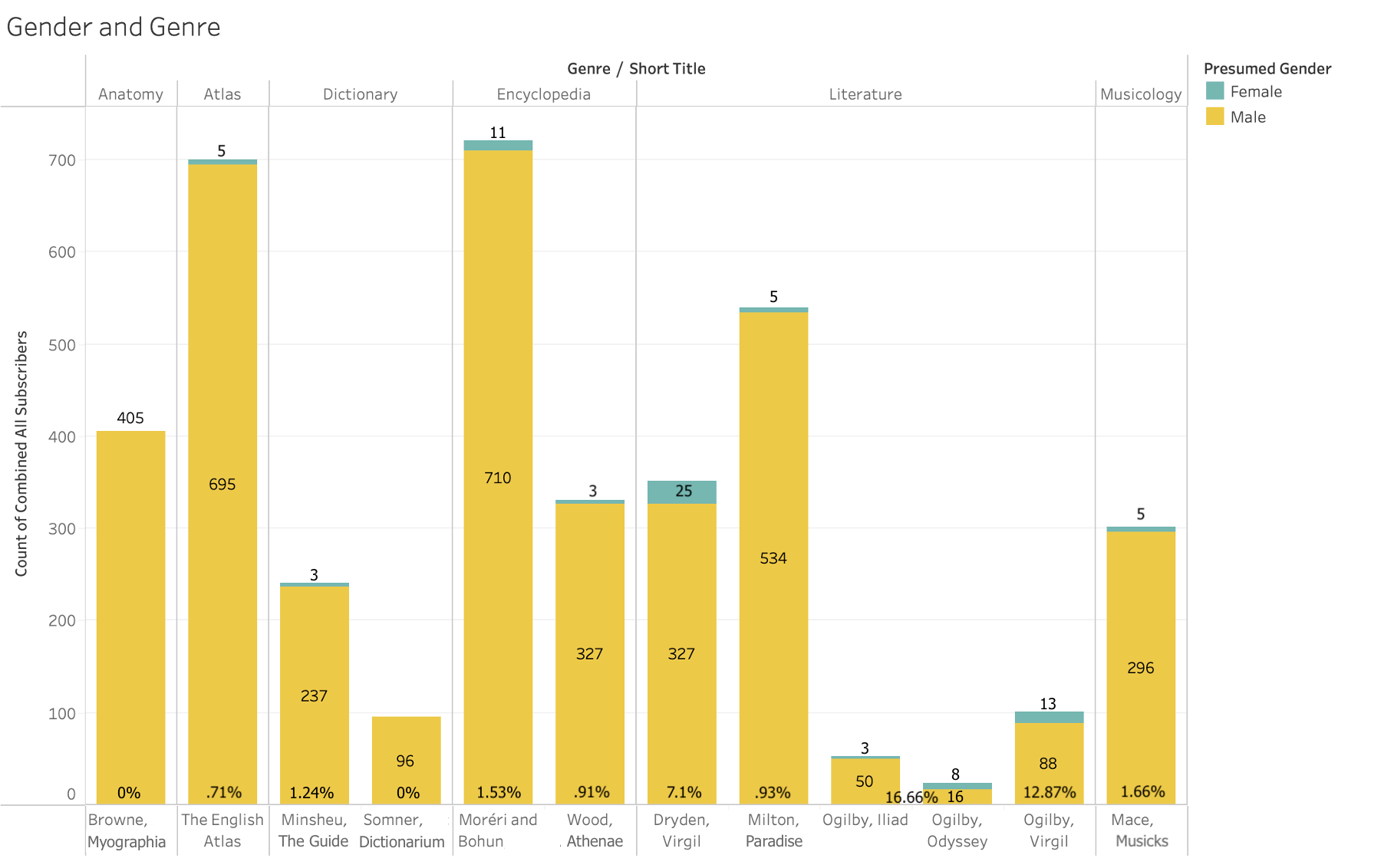
Initial Findings
The study of early modern women as readers, not only writers, is still in its infancy.1 As scholars search for new sources and methodologies for uncovering what and how women read, subscriber lists offer a new perspective into female readership. Of course, subscribing to a book does not mean that person ever read the copy they received. Still, subscription lists can at minimum represent aspirational readership, a desire to participate in literary culture.
For example, a preliminary analysis of gender and genre in EEBS shows that readers with female names were most likely to subscribe to literary works. To the early modern mind, women readers and femininity were most often associated with novella, prose tales written in the vernacular, usually in realistic language on domestic themes.2 In subscriber lists, however, women demonstrate an interest in literature at its most ‘masculine’ form: English poetry such as Paradise Lost or translations of classical authors into English verse, like Virgil and Homer. No novella were published by subscription in England in these years, so a comparison cannot be made, but it is intriguing that women were most active in supporting the production of high literature.
Based on percentages alone, musicology was the next most popular genre for women to subscribe to, closely beating encyclopedias. This would make sense given that music was typically included in the education of girls across social classes. Likewise, the absence of women subscribers to anatomy books is understandable, given their lack of access to university education in medicine.
Similarly, looking at the gender divide by individual books in the chart below, the absense of female subscribers to Somner's 1659 Dictionarium Saxonico-Latino-Anglicum is not surprising given that the first known female Anglo-Saxon scholar, Elizabeth Elstob, was not born until 1683.

Notes
- Leah Knight and Micheline White, “The Bookscape” in Women’s Bookscapes in Early Modern Britain, eds., Leah Knight, Micheline White, and Elizabeth Sauer, (Ann Arbor, MI: University of Michigan Press, 2018), 2.
- Ian Frederick Moulton, “‘Who Painted the Lion?’ Women and Novelle,” in Women’s Bookscapes in Early Modern Britain, eds., Leah Knight, Micheline White, and Elizabeth Sauer, (Ann Arbor, MI: University of Michigan Press, 2018), 154-5.
